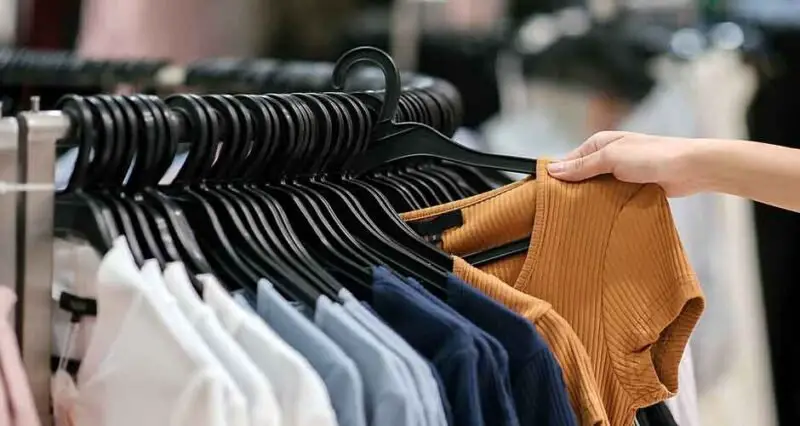
Key Takeaways:
- The dynamic history of synthetic fibers from their inception to the present has significantly influenced the fashion industry.
- Understanding the balancing act between the benefits of synthetic fibers and their environmental impact is crucial for sustainable development.
- Technological advancements and consumer awareness are shaping the future of synthetic textiles in fashion.
The Advent of Synthetic Fibers: A Historical Perspective
The narrative of synthetic fibers takes its roots from the halls of innovation and the ceaseless pursuit of functional alternatives to natural textiles. These artificial marvels, emergent from the confines of scientific laboratories, have undergone transformative evolutions, transcending their original purpose as mere substitutes for silk or cotton. As we trace the timeline of synthetic fibers, we unearth a history marked by groundbreaking developments that have reshaped the fashion industry’s fabric quite literally. It was a journey fueled by the desire for materials that could resist wear and tear, mimic the desirable aspects of natural fabrics, and meet the variegated curiosities of textile connoisseurs and everyday consumers.
Synthetic Fibers: Meeting Modern Demands
In a world that thrives on versatile fashion and multi-use garments, synthetic fibers have ascended as the materials of the moment, curtailing the previous dominion of their natural counterparts. They harmonize with the ebullient pace of today’s lifestyles and adapt fluidly across various textile applications. For instance, many fabric wholesalers are now prioritizing synthetics due to their endurance against the rigors of daily life, resistance to shrinking and fading, and the maintenance ease they offer. Furthermore, these fibers have evolved into symbols of innovation as scientists continue to refine and enhance their properties to produce textiles that withstand the vicissitudes of fashion and functionality. Enthusiasts seeking depth in the subject are enriched by a wealth of scientific literature, illuminating the strides in polymer technology that underscore current synthetic fiber maturity.
The Role of Synthetic Fibers in Athleisure and Sportswear
The athleisure trend, a fusion of athletic prowess with leisurely grace, finds its core strength in the utility of synthetic fibers. The unique properties of these fabrics, such as resilience, stretchability, and moisture management, have enabled designers to conjure up apparel that meets the stringent demands of physical activity while exuding aesthetic appeal. This perfect blend of comfort and style is why athleisure wear has emerged from gyms and yoga studios into the mainstream fashion vista, adorning city streets and casual outings. As a result, synthetic fibers have entrenched themselves as the invisible champions of an athleisure era that prioritizes functionality without compromising fashionability.
Environmental Considerations of Synthetic Fiber Production
The intersection where textile innovation meets environmental responsibility is an ever-evolving roadway. While the benefits of synthetic fibers are abundant, their ecological implications are a sweeping concern driving the call for green initiatives within the fashion domain. The production methodologies, utilization of non-renewable resources, and challenges in recycling and waste management are focal points of extensive environmental assessments. Progressive strategies that intertwine the tenets of eco-friendliness with the versatile allure of synthetic fibers are gaining momentum and promulgating a new doctrine of sustainable fashion, a narrative championed by emerging studies in sustainable textile production that foreground pioneering practices, alluding to a possible renaissance in synthetic fiber manufacture.
Synthetic Fibers and the Fashion World
The elasticity of synthetic fibers to mold into an array of fabrics with diverse textures, combined with the alchemy of technological advancements, has expanded designers’ toolkits to explore the unprecedented territory in couture. From visionary runway pieces to commercial fast fashion staples, synthetics have accorded a pliable canvas to spin tales of sartorial elegance and practicality, manifesting a marriage of commodiousness and chic. Beyond visual aesthetics, synthetics’ stalwart presence in everyday fashion honors their innate ability to conform to the dynamic climate of changing trends, consumer preferences, and global economic fluctuations. They serve as steady threads interwoven into the shifting tapestries of contemporary apparel trends.
The Economic Implications of Synthetic Fiber Industry
The ramifications of the synthetic fiber boom extend into the intricate financial fabrics of nations, stimulating macroeconomic stability through trade, investment, and industrial productivity. This commerce nexus burgeons many socio-economic pillars, fortifying employment prospects and catalyzing research endeavors. Moreover, the industry’s potential to spur economic development is unprecedented, with its ramifying operations, including sourcing, production, and worldwide distribution. Despite fluctuations in global markets, synthetics have resisted economic vicissitudes, underscored by a persistent demand that fuels their stronghold in regional and international trade narratives.
Consumer Preferences and the Popularity of Synthetic Fabrics
At the heart of the synthetic fiber narrative lies the consumer, whose choices are pivotal for industry trends. In an era where practicality converges with economic sensibility, synthetic fabrics emerge as the custodians of consumers’ aspirations. Factors such as affordability, durability, and reduced care requirements resonate with the ideals of a pragmatic shopper who juggles multiple roles and responsibilities. Recognizing these fibers’ multifaceted functionality accents their omnipresence in wardrobes globally. As this awareness deepens, so does the consumers’ propensity towards synthetic options, beckoning manufacturers to satiate this demand with an ever-expanding array of textile offerings.
Educating Consumers: Transparency and Information Accessibility
At the convergence of textile innovation and informed decision-making stands the educated consumer. Synthetics have been a part of clothing labels for decades, yet consumer understanding sometimes needs to be more threadbare. Whether for environmental, ethical, or sartorial reasons, the modern-day buyer is beckoned towards a transparent landscape of knowledge regarding their textiles. Efforts to illuminate synthetic fibers’ intricacies and life cycles through clear labeling, robust education, and accessible information can bridge this knowledge gap. An informed community of consumers elevates the dialogue around textile choices and empowers individual agency in the wardrobe selections that define personal style and value systems.


